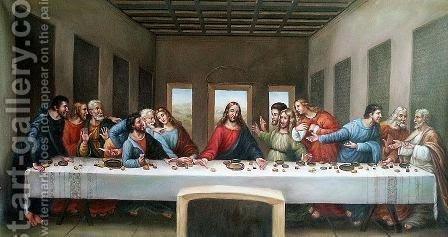Painting Obsessions What Was Da Vinci Inspired By
- Written by News Company
Most art connoisseurs deem Leonardo Da Vinci as a pioneer in the Renaissance art movement. He is the artist who painted the magnificent Mona Lisa, an artwork that ranks among the most renowned paintings of all time.
Like most artists, Leonardo Da Vinci found inspiration in several daily observations and events and immortalized them on canvas. However, what differentiated da Vinci from his contemporaries was his search for inspiration in the extraordinary and unconventional sources that were often overlooked by others.
We will be looking at some of Da Vinci’s greatest sources of inspiration that were seen prominently in his famous works. Read ahead if you are curious to know what inspired a great mind like that of Da Vinci! Maybe, you can find some inspiration for your next big piece of art!
Visual Illusions

Recognized as a polymath by many historians, Leonardo Da Vinci delved into extensive studies that ranged beyond art. One among them was physiognomy, through which he introduced the concept of ‘moti mentali’.
The idea of ‘moti mentali’ deals with the representation of transient mental states, thoughts, and emotions. This inspired Da Vinci to inculcate elements of ambiguity in his artwork. Thus, the expressions of the subject in most of his portraits remain a topic for discussion, due to their dynamic nature.
Perhaps the best example to depict the influence of visual illusion in Da Vinci is his most recognized work, Mona Lisa. Several researchers and art experts have theorized different arguments about Mona Lisa’s smile and its dynamicity. The entire basis of this critical analysis is the inculcation of ‘moti mentali’ in the splendid piece of art.
Water as a Vehicle of Nature
Owing to its fluidity, Leonardo Da Vinci perceived water as the vehicle of nature. However, his interest in the water went beyond its artistic and metaphorical implications. He wished to understand the concepts of fluid dynamics which was the primary cause behind the intriguing nature of water.
As a result, one of his earliest paintings was that of a river cascading over a river. Since then, several of his artworks including the Mona Lisa featured water. He was so intrigued by the water that he went on to conduct several experiments in the field of water engineering.
This marked the beginning of Da Vinci’s journey as one of the most notable water engineers of his time. Some scholars argue that da Vinci was the first hydrologist who formulated several hypotheses about water based on empirical evidence.
Engineering Science
Leonardo Da Vinci was a polymath in the true essence of the word. While most people know him as a legendary painter, he contributed immensely to the development of engineering science, architecture, and craftsmanship in his time.
Apart from creating some of the most magnificent masterpieces, Da Vinci used to sketch prototypes of several engineering marvels such as gliders, helicopters, and parachutes. This proved that he was indeed way ahead of his time, both creatively and intellectually.
However, most of his prototypes never saw the light of day in terms of their execution. Many critics of that time failed to recognize the utility of those engineering marvels in the future and deemed them to be unfit for use.
The Golden Ratio in Mathematics

Recognized first by Luca Pacioli in 1509, the Golden Ratio is a rule in mathematics that presents an aesthetic arrangement of the subjects in the frame. Da Vinci inculcated this principle in his artworks as he tried to establish a sense of proportionality through them.
Additionally, Da Vinci used the principles of linear perspective to add definition to his paintings. These included framing his subjects along parallel or horizontal lines to create a sense of depth in his work.
Da Vinci emphasizes the principle of the Golden Ratio and mathematical perspective in The Last Supper, which is one of his most popular pieces of art. In this painting, he creates a ‘vanishing point’ through the placement of the twelve apostles and the lines on the floor.
Human Anatomy

Leonardo Da Vinci developed an avid interest in human anatomy at a very young age. This was during his apprenticeship with Andrea del Verrocchio, a renowned artist in the Renaissance period. Thereafter, Da Vinci started drawing remarkably accurate representations of the human body.
To hone his skills better, Da Vinci further studied human anatomy and physiology. Additionally, he recreated several parts of the body such as the lungs, brain, and skeletal system with the help of wax moulds.
This knowledge aided him to draw one of his legendary works, Vitruvian Man. The splendid piece of art is appreciated by all members of the artistic community for representing the model of the human body in perfect proportion.
The Bottom Line
Seeking a source of inspiration is one of the preliminary steps behind creating a magnificent piece of art. This phenomenon remains constant despite the changing waves of times, through the traditional towards the contemporary.
However, seldom do we come across artists like Leonardo Da Vinci, who seek inspiration across myriad places. If you are seeking for some artistic inspiration, you can browse through the works of Da Vinci available on the 1st Art Gallery. Furthermore, you can purchase authentic reproductions of some of his favorite works and add them to your collectibles.



















